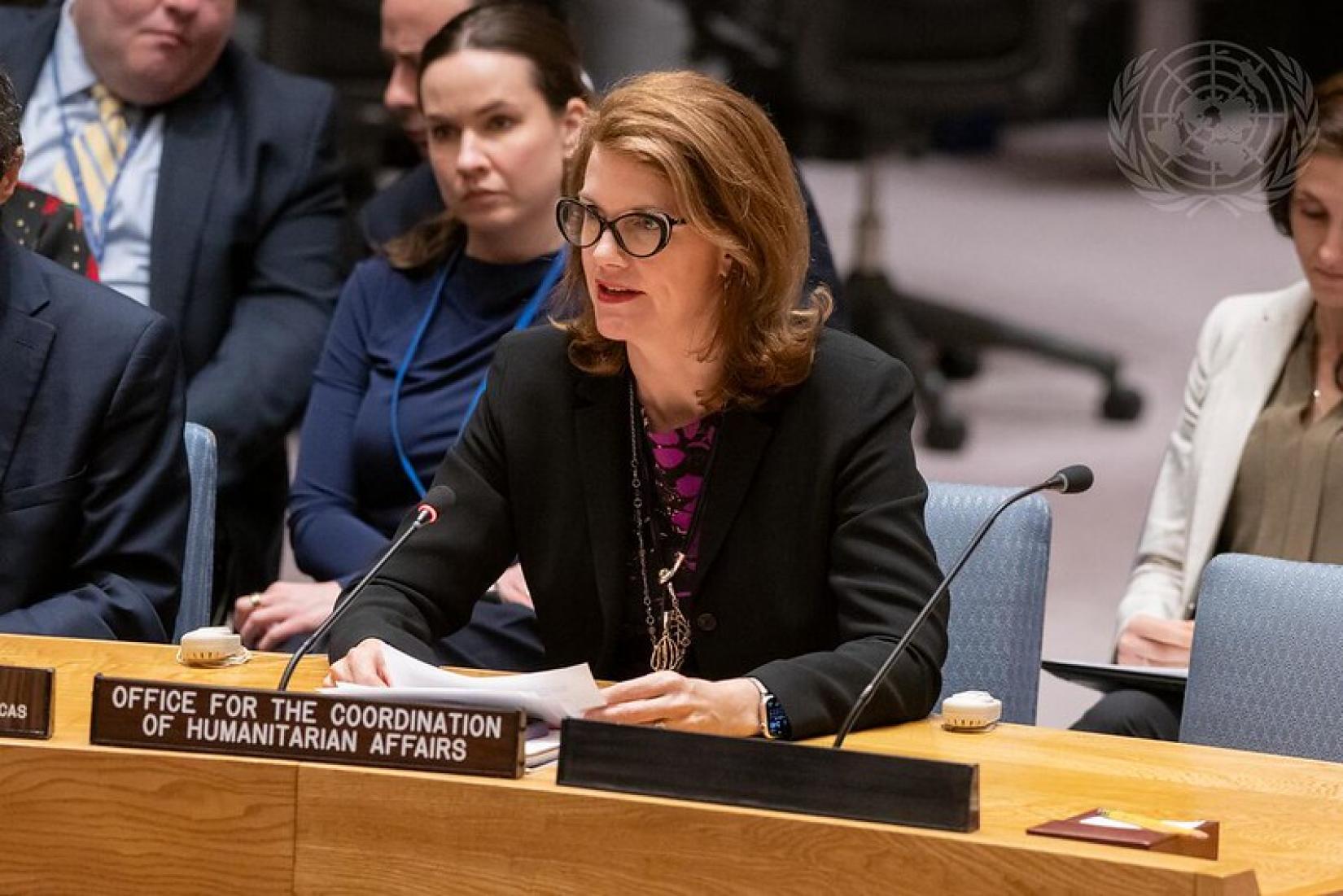Briefing to the Security Council on the humanitarian situation in Ukraine by Lisa Doughten, Director, Financing and Partnerships Division for OCHA, on behalf of Tom Fletcher,Under-Secretary-General for Humanitarian Affairs and Emergency Relief Coordinator
[as delivered]

Thank you, Madam President.
Madam President, Members of the Security Council,
Thank you for this opportunity to update you on the humanitarian situation in Ukraine.
This discussion is particularly urgent as the conflict and its catastrophic impacts grind on into another winter.
Daily attacks continue, inflicting death, injury and untold suffering on ordinary Ukrainians, and destruction and damage to civilian infrastructure.
Near the front line people live life on the edge.
They face constant shelling and impossible choices: flee in perilous conditions leaving everything they have – perhaps for the second or third time; or stay, and risk injury or death.
This is no idle concern. Dozens of civilians have been killed in recent attacks in the regions of Zaporizhzhia, Donetsk, Kharkiv and Kherson, joining the thousands whose lives have already been claimed by this brutal war.
And as the use of long-range weapons has steadily increased since July, so has the civilian toll.
November saw a particularly deadly increase. Last month, long-range weapons killed 65 civilians and injured 372 across 11 regions of Ukraine – double the number of October.
Madam President,
As temperatures start to drop as low as minus 20 degrees Celsius in some places, our concern for civilians intensifies – particularly in light of widespread damage to critical infrastructure.
Since March this year, Russian armed forces have conducted repeated, large-scale, coordinated attacks against Ukraine’s energy infrastructure.
According to UNDP, more than 60 per cent of energy generation facilities have now been damaged.
Going into the coldest months of the year, civilians’ access to electricity, gas, heating and water have been severely affected.
These impacts are exacerbated by a simultaneous – and equally egregious – increase in attacks harming humanitarian operations.
Humanitarian offices, vehicles, storage facilities and relief supplies have all been damaged.
And humanitarian workers have not been spared.
This year, the number of humanitarian aid workers killed in Ukraine has almost tripled – from four in 2022 and five in 2023, to 11 so far in 2024.
Madam President,
Across Ukraine, some 14.6 million people currently need humanitarian assistance.
Ten million people have now been displaced. Of these, 3.5 million people are being hosted in communities across every one of Ukraine’s 24 regions, and around 6.8 million are refugees in other countries.
This displacement is having a disproportionately negative impact on women and girls, particularly older women. Their exposure to gender-based violence has been heightened, and their access to support services hindered.
Madam President,
Grappling with the freezing conditions and the dangers posed by missile attacks, the humanitarian community is doing all it can to provide people with the support they need.
In 2024, more than 630 humanitarian organizations have provided at least one form of assistance to 7.7 million people across Ukraine.
This includes essential support for the most vulnerable – the elderly, those with disabilities and displaced people living in collective centres or along the front line.
And OCHA and our humanitarian partners are working to increase funding to women's organizations, recognizing their critical role in the provision of life-saving care, safe spaces and advocacy for women’s rights amid conflict.
Under the 2024-2025 Winter Response Plan, aid workers have also so far provided winter-related assistance to more than 144,000 people. Thirty-three per cent are older people, and 9 per cent are people with disabilities.
This assistance includes essential household repairs, support for water and heating systems, and providing access to safe and warm shelter for those displaced.
Madam President,
We are extremely concerned about the plight of an estimated 1.5 million civilians in need of support in parts of the regions of Donetsk, Kherson, Luhansk and Zaporizhzhia under Russian Federation occupation.
We remain unable to reach these people at any adequate scale.
The failure to deliver assistance in these areas could have dire consequences, especially in winter.
As we have said before, under international humanitarian law, all parties must allow and facilitate the rapid and unimpeded passage of humanitarian relief for civilians in need and must ensure that humanitarian personnel have the freedom of movement required for their work.
It is crucial that we are able to bring relief to those who need it, wherever they are.
Madam President,
Here is what we need from the international community.
One: Unequivocal commitment to and compliance with international humanitarian law, encompassing the protection of civilians and civilian objects, including humanitarian personnel and assets, and unimpeded humanitarian access to people in need.
Two: Funding. So far in 2024, donors have generously contributed almost $2 billion to the humanitarian response. However, there is still a substantial $1.1 billion shortfall. To sustain humanitarian operations in an increasingly complex and dangerous environment, we urgently need donors to increase and accelerate flexible funding for the response going into 2025.
And three: As long as this intolerable war persists, civilians will continue to suffer the severe consequences. What Ukraine and its people need is an end to this devastating war.
Thank you, Madam President.

